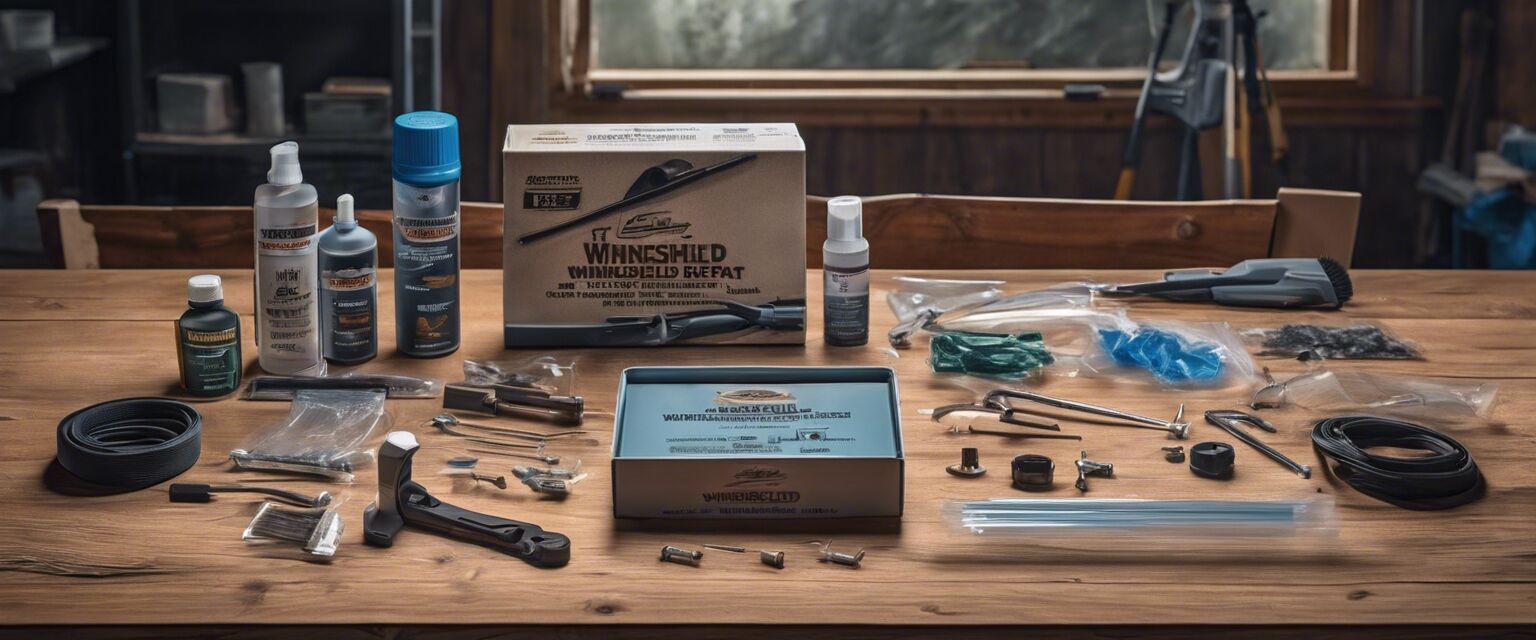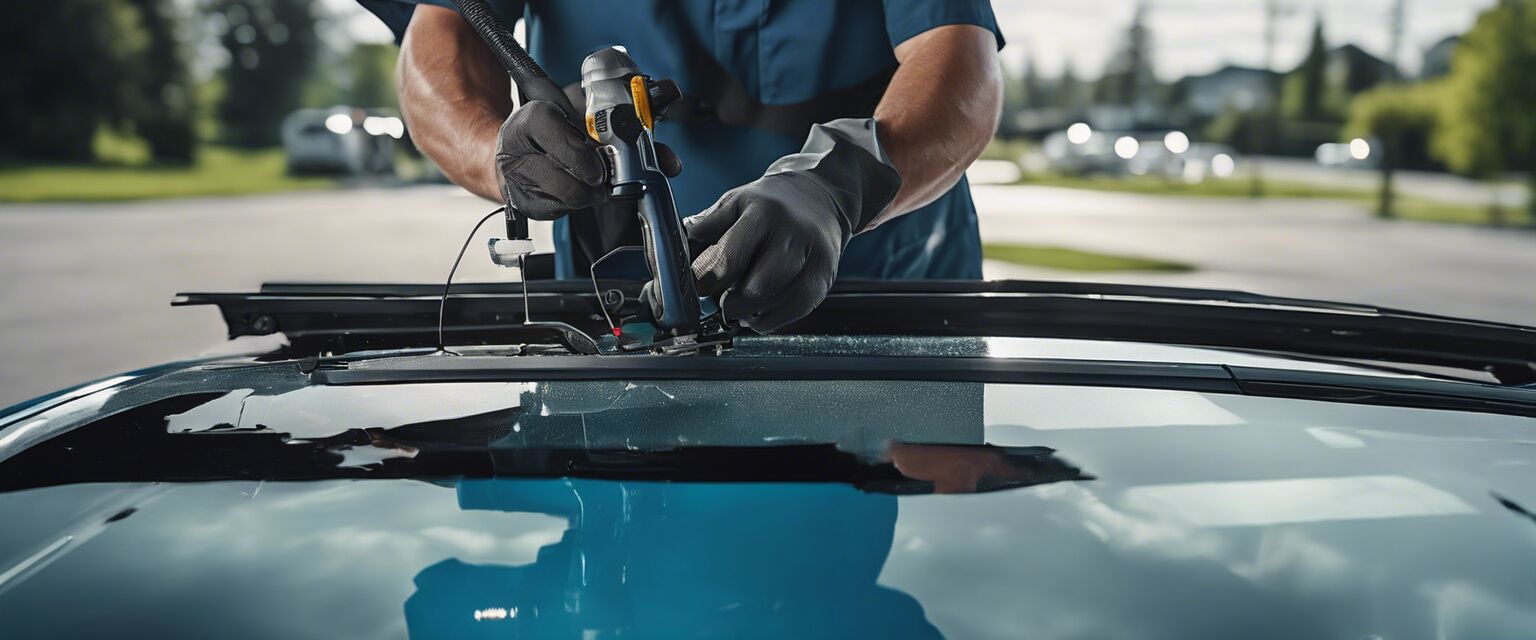
Safety and Regulations in Windshield Repair
Key Takeaways
- Understanding safety regulations is crucial for effective windshield repair.
- Compliance with Federal and state standards protects both workers and customers.
- Proper training and certification are essential for high-quality repairs.
Windshield repair is more than just fixing a crack or chip; it involves adherence to strict safety regulations and standards to ensure the safety of both technicians and vehicle owners. Compliance with these regulations helps maintain transparency, quality, and safety in the repair process.
Understanding Safety Regulations
Safety regulations in windshield repair are set forth by various federal and state agencies. These regulations govern repair techniques, material usage, and worker safety protocols. Hereâs a breakdown of significant regulations:
| Regulation | Description |
|---|---|
| ANSI Z26.1 | Setting standards for the performance of automotive glass. |
| FMVSS 205 | Federal Motor Vehicle Safety Standard outlining the performance requirements for glazing materials. |
| OSHA Guidelines | Occupational Safety and Health Administration regulations for workplace safety. |
Importance of Compliance
Adhering to these safety regulations is crucial for maintaining the integrity of the repair process. Here are some key points regarding the importance of compliance:
- Ensures safety for both technicians and customers.
- Protects businesses from legal liabilities and penalties.
- Maintains high standards of quality in repair work.
Common Safety Standards for Windshield Repairs
When it comes to methods and materials used in windshield repair, certain safety standards are recognized as vital:
- Clear Visibility: Repair materials must ensure that the driver's visibility is not affected.
- Sealing Performance: Repairs must maintain airtight sealing to prevent leaks.
- Weather Resistance: Finished repairs must be durable enough to withstand extreme weather conditions.
Training and Certification
Proper training and certification for technicians play a significant role in meeting safety standards. Hereâs how:
- Understanding different types of windshield damage.
- Learning about the best practices for repairing and replacing windshields.
- Keeping up-to-date with the latest safety regulations and industry standards.
Tips for Choosing a Reliable Repair Service
Beginners Section
- Check if the service is certified in windshield repair.
- Inquire about the types and quality of materials used.
- Read reviews to gauge previous customer satisfaction.
- Ask about compliance with safety regulations.
Regulatory Bodies
Various organizations are responsible for setting and enforcing these safety regulations. Some notable bodies include:
| Organization | Main Role |
|---|---|
| NHTSA | National Highway Traffic Safety Administration; oversees motor vehicle safety regulations. |
| ASA | Automotive Service Association; advocates for safe repair practices. |
| NSF | National Sanitation Foundation; certifies products for health and safety standards. |
State-specific Regulations
Each state may have its own set of regulations when dealing with windshield repair, which can include:
- Permit requirements for specific repair activities.
- Insurance requirements for businesses.
- Mandatory training programs for technicians.
Ongoing Compliance Education
It's important for companies and technicians to engage in ongoing education regarding compliance. Regular workshops, training sessions, and certifications can ensure that everyone is up-to-date on safety standards.
Resources for Technicians
Technicians can utilize several resources to stay informed:
- Webinars from industry experts.
- Workshops with hands-on training for repairs.
- Online forums for sharing experiences and tips.
- Books and manuals on best practices in windshield repair.
Benefits of Following Safety Regulations
Following safety regulations not only protects workers and customers but also offers several benefits to businesses:
Pros
- Improves customer trust and satisfaction.
- Reduces the risk of accidents and injuries.
- Enhances the reputation of the business.
- Can lead to lower insurance premiums.
Cons
- Initial compliance costs can be high.
- Time-consuming training and certification processes.
- Requires constant updates and vigilance to maintain standards.
Conclusion
In conclusion, understanding and adhering to safety regulations is vital for the windshield repair industry. By prioritizing safety, technicians can ensure high-quality repairs, protect themselves, and provide better service to their customers. Make sure you are well-informed about the regulations that apply to your location and stay updated through ongoing education and certification programs.
Learn More
For more information on windshield repair services, check out our different product categories:
- Emergency Repair Solutions
- Insurance and Warranty
- Professional Repair Services
- Windshield Care Products
- Windshield Repair Kits
- Windshield Replacement
Frequently Asked Questions
What is the most important safety regulation for windshield repair?
Ensuring clear visibility and proper air sealing are among the most crucial safety regulations in windshield repair.
How can I verify a repair technician's compliance with safety regulations?
Request proof of certification and inquire about their training and compliance history.
Are there specific tools that meet safety regulations for windshield repair?
Yes, using quality tools that meet industry standards is necessary for ensuring safety and effective repairs.
What should I do if my windshield repair service does not follow safety regulations?
You should report them to your local regulatory body and seek a qualified repair service.
By understanding and following safety and regulatory practices concerning windshield repair, you're ensuring a high standard of work while promoting safety and quality within the industry.






